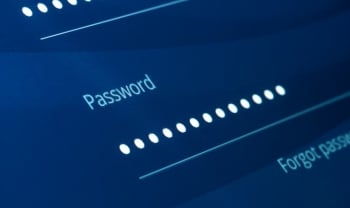Weak Authentication Attacks: 49% report high costs

Cyberattacks on large companies grab the headlines, creating the false impression that only big organizations are targeted by cybercriminals. This misleads smaller companies into believing that they are not potential targets because of their size or low profile. However, threats against small and medium-sized companies have been a cause for concern in recent years. Experts warn that companies with fewer than 100 employees are especially vulnerable to a range of threats.
A recent survey reveals that weak authentication attacks are considered one of the most costly for businesses, according to 49% of respondents. While large organizations with more than 10,000 employees implement multi-factor authentication (MFA) in 87% of cases, this percentage drops considerably in companies with a staff of between 26 and 100 employees, where only 34% use it. This scenario highlights the need for SMBs to take measures to strengthen their security as cyberattacks have become more sophisticated and their impacts more severe, particularly in terms of the increased time required to investigate and try and mitigate any damage sustained.
How to convince your customers to adopt MFA?
Large and small companies alike are realizing the importance of cybersecurity. That's why they are turning to MSPs to leverage their expertise in this area. But it's also true that when you try and guide customers it can take time to convince them to add more technical tools. Here are some strategies to help you persuade customers of the importance of implementing a solution as crucial as MFA:
-
Educate your customers:
Explain to them why MFA is an essential tool to protect their data and systems. Be sure to highlight how it drastically reduces the risk of unauthorized access, providing greater peace of mind and confidence.
-
Listen and understand their concerns:
It is important to understand the reasons that generate reluctance to change. Among the most common concerns are the inconvenience adopting new solutions may cause, the associated cost, the complexity of the process and potential end-user resistance. By providing accurate information on this process, you can help dispel these worries. For example, point out the potential savings from breach prevention compared to the cost of data retrieval and regulatory fines. You should focus on offering MFA options that are easy to use and adapt to the user's specific needs.
-
Reinforce your message with tangible examples:
Use testimonials and success stories from customers or colleagues who have already implemented MFA with positive results. Demonstrate how they can protect identities without negatively affecting productivity and efficiency, enhancing reputation and customer satisfaction.
-
Show that you understand their business:
Offer a free trial so that your customers can discover the ease of use and security that MFA delivers. In addition, you can customize a bundle that combines MFA with other key cybersecurity solutions, tailoring it to each customer's specific needs and objectives.
In today's landscape, MFA has become a fundamental pillar of cybersecurity, something MSPs understand all too well. However, many small and medium-sized businesses are still unaware of the tools available to protect their infrastructure from the growing number of cyberthreats. Implementing these strategies will enable you to reassure your customers of the need to take these steps and guide them towards adopting a stronger cybersecurity posture.
If you would like to learn more about MFA and how it strengthens cybersecurity for businesses, check out the following articles on our blog:


